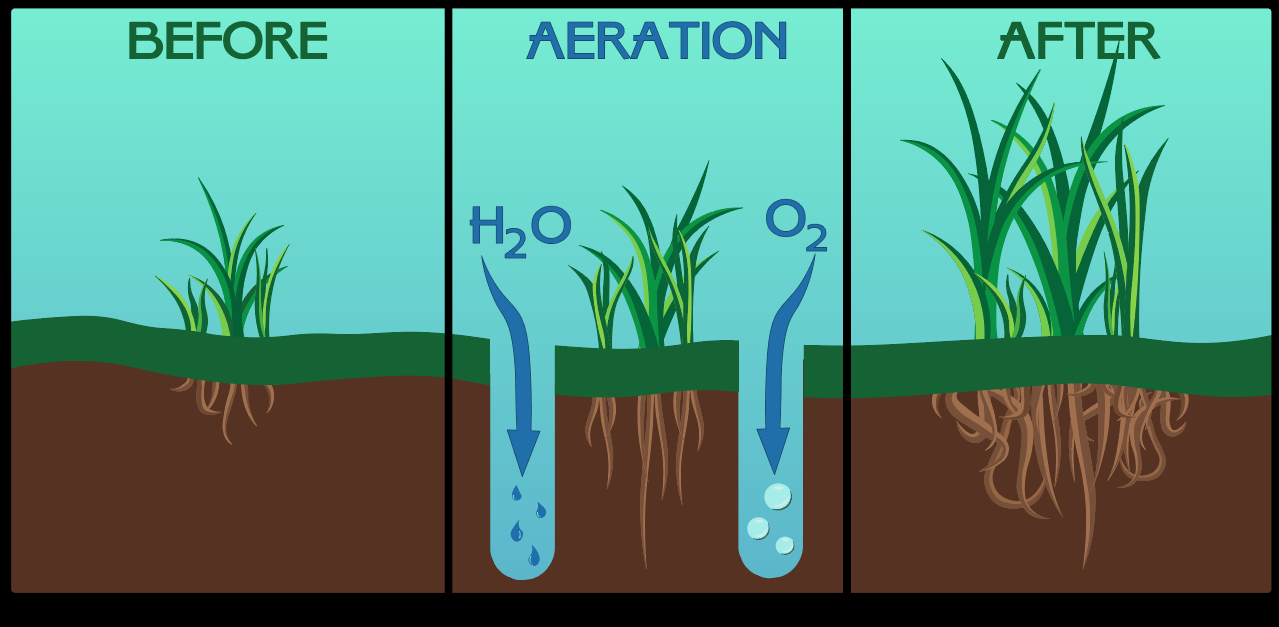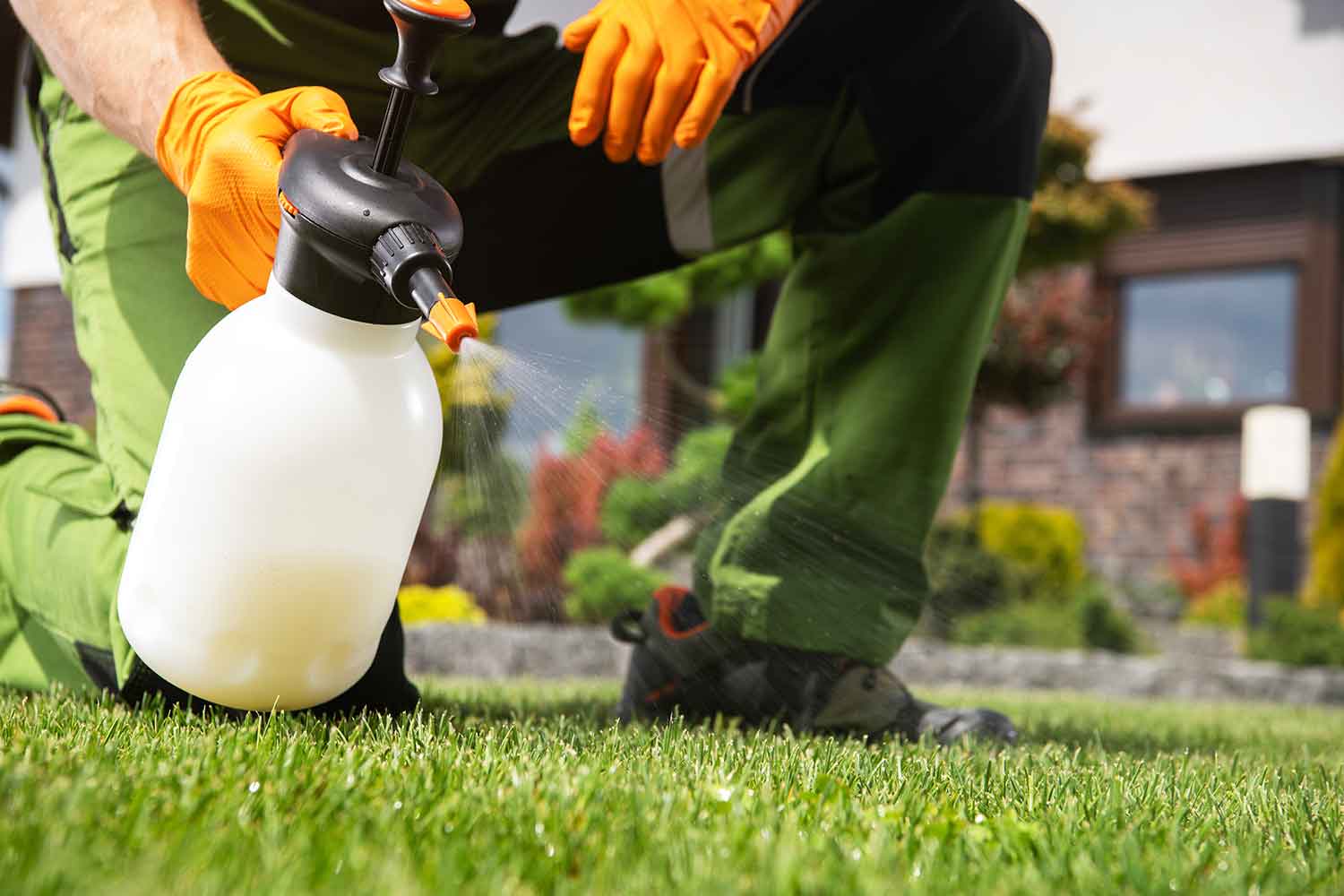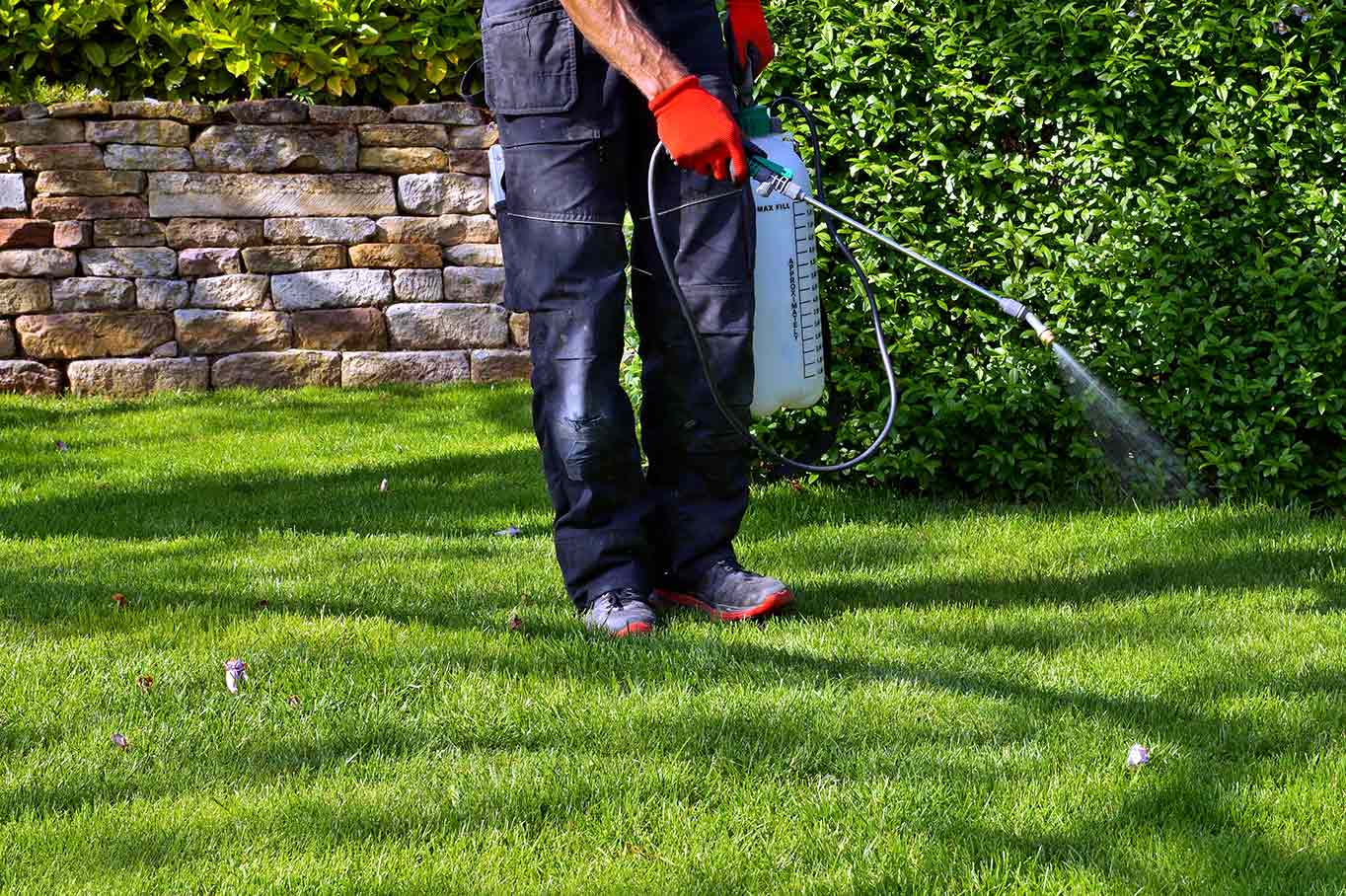Last Updated:
July 26, 2025
If your lawn is looking tired, patchy, or just not thriving the way it should, especially in Nebraska’s clay-heavy soils, you might be dealing with a problem beneath the surface. Liquid aeration is a modern, effective solution that works quietly and efficiently to revitalize your lawn from the ground up. It’s not about punching holes or ripping up your yard. Instead, it’s about working smarter by softening the soil using safe, targeted applications that open up your lawn to breathe, hydrate, and grow.
Let’s take a closer look at how liquid aeration works and why it’s becoming a popular choice for homeowners throughout Nebraska.

Liquid aeration isn’t mechanical; it’s chemical, but in a good way. Specialized solutions, often featuring soil-softening ingredients like ammonium lauryl sulfate, are sprayed directly onto your lawn. These products break apart dense soil particles at a microscopic level, improving the structure of the soil and allowing roots to spread deeper and access more resources.
Rather than creating physical holes, liquid aeration opens up natural pathways by loosening the bonds between particles. The result? Your soil becomes more porous, your lawn breathes easier, and your turf starts to perk up in response. Think of it as giving your lawn a deep-tissue massage instead of a surface-level stretch.

Liquid aeration is particularly well-suited for lawns in Nebraska, where high clay content and seasonal stress make compaction a recurring issue. Here’s why homeowners are making the switch:

Another challenge Nebraska lawns face is thatch, which is a layer of dead organic material that builds up just above the soil. A little thatch can be beneficial, but too much creates a barrier that blocks water, oxygen, and nutrients.
While liquid aeration isn’t a thatch remover in the traditional sense, it plays an important role in managing thatch naturally. As the soil structure loosens, beneficial microbes are able to thrive. These microbes help break down thatch from within, slowly digesting the excess material and turning it into usable nutrients for your lawn.
In other words, you’re not just fixing compaction… you’re setting the stage for healthier, more self-sustaining soil.

Timing matters when it comes to lawn treatments, and Nebraska’s climate calls for a strategic approach. Liquid aeration can be done in tandem with fertilization or overseeding for even better results.
While some homeowners use DIY liquid aeration products, hiring a professional ensures consistent coverage, proper dilution rates, and a long-term aeration strategy tailored to your lawn’s needs. The best times to apply liquid aeration are typically:

After your lawn has been aerated with liquid treatment, it’s the perfect time to build on that momentum. Consistency is the key. With improved soil conditions, every other lawn care task becomes more effective. Keep your lawn looking its best by following these key practices:

If your lawn feels firm underfoot, drains poorly, or struggles in spite of proper care, liquid aeration could be the missing link. Especially in Nebraska’s challenging soil conditions, liquid treatments offer a smart, low-disruption way to give your turf a fresh start. Whether you’re managing a busy backyard in Lincoln or a spacious suburban lawn, liquid aeration fits seamlessly into your seasonal lawn care plan.
Call us today to schedule a liquid aeration treatment.